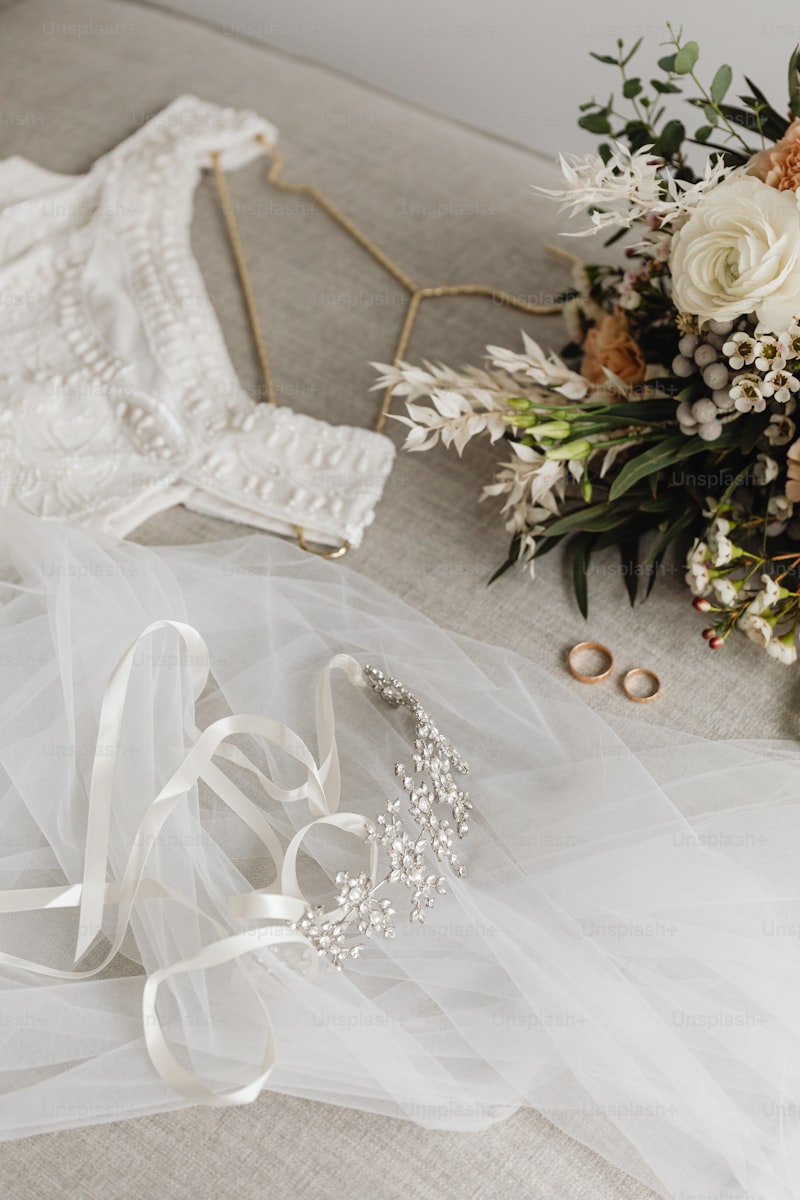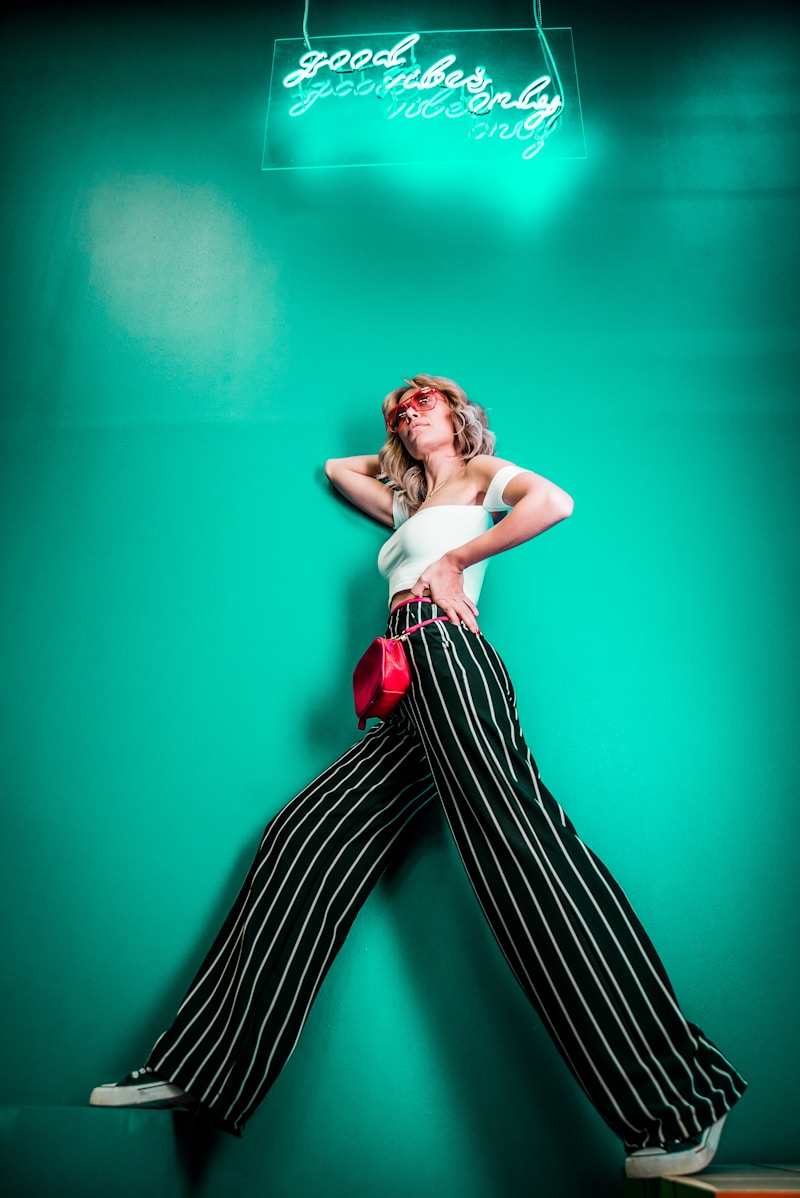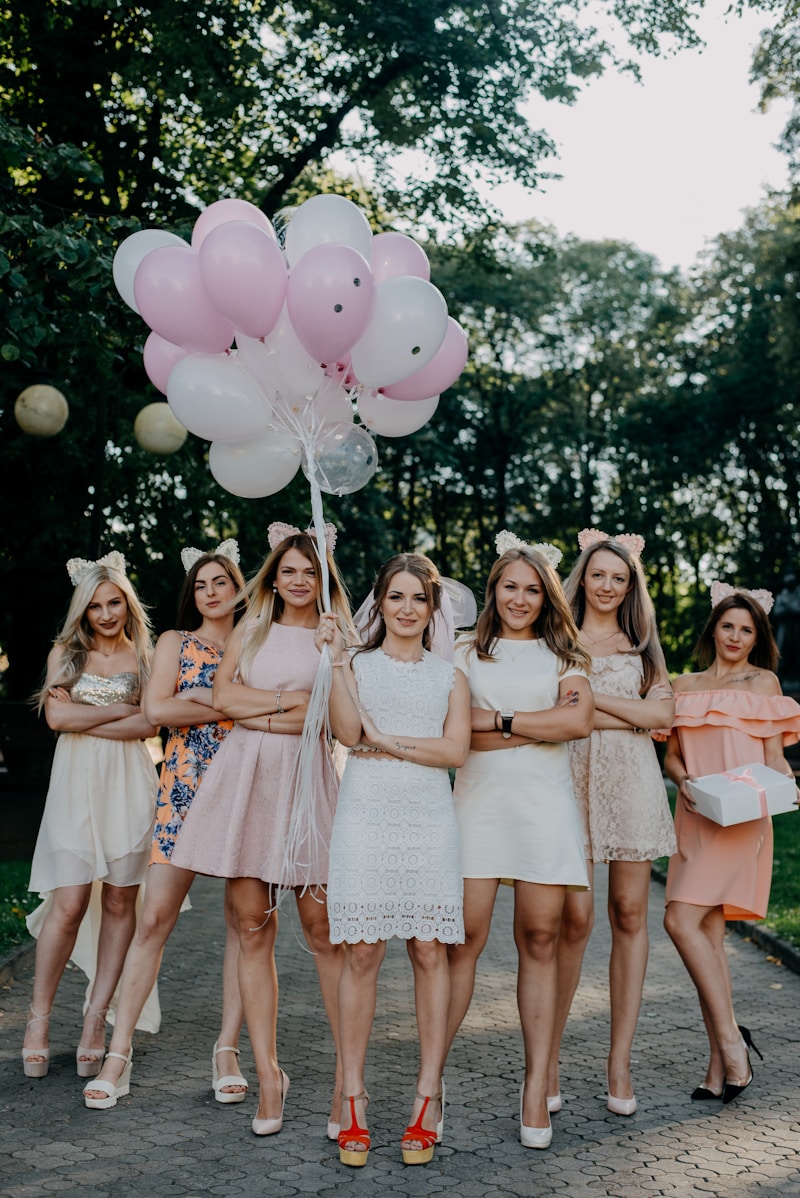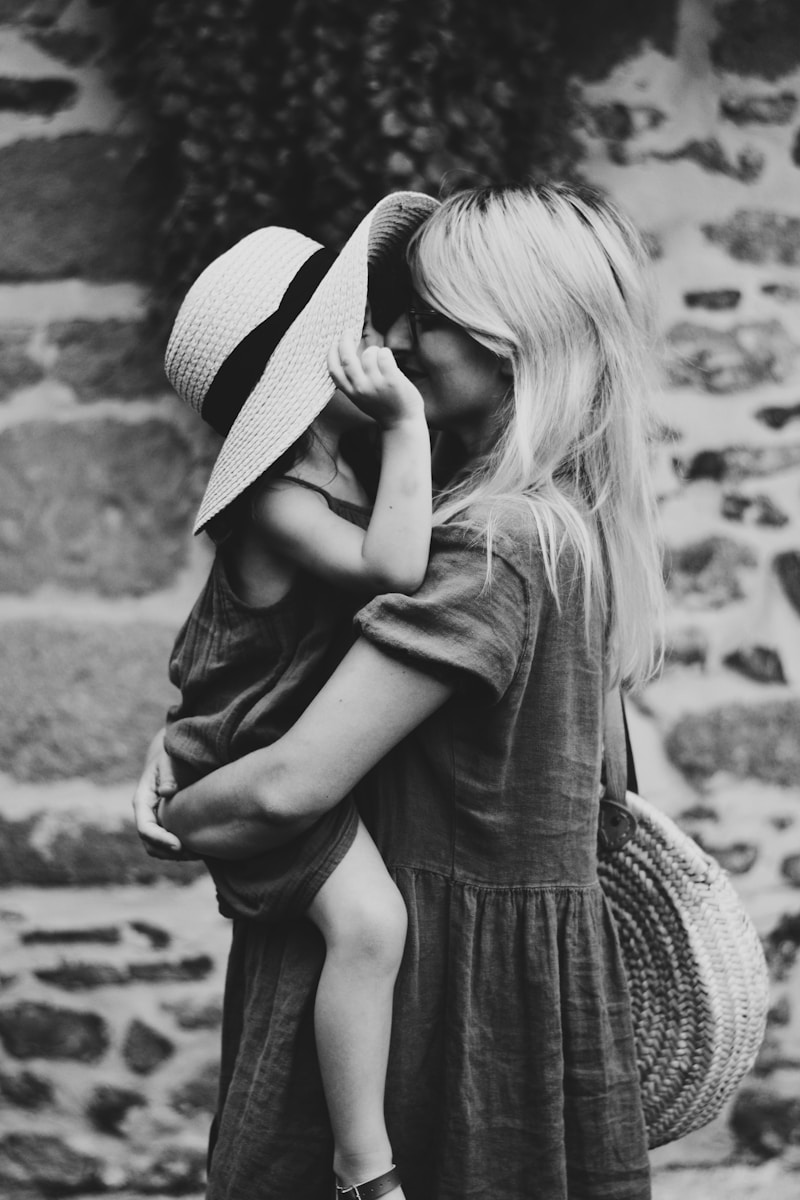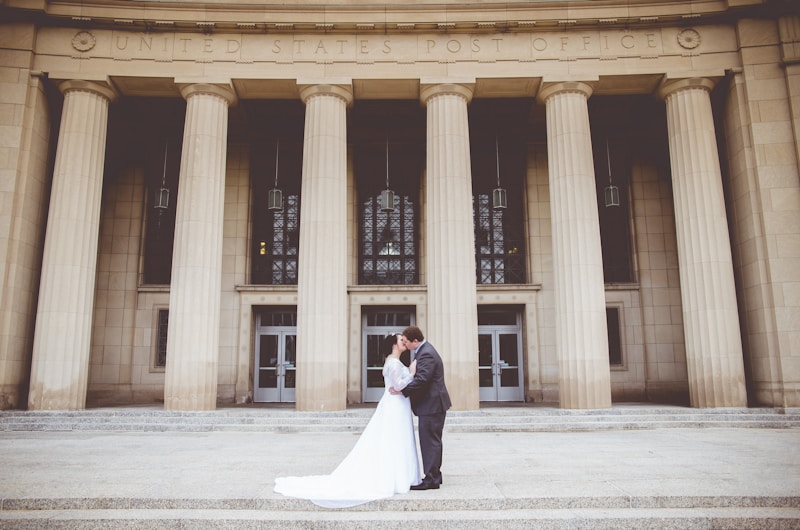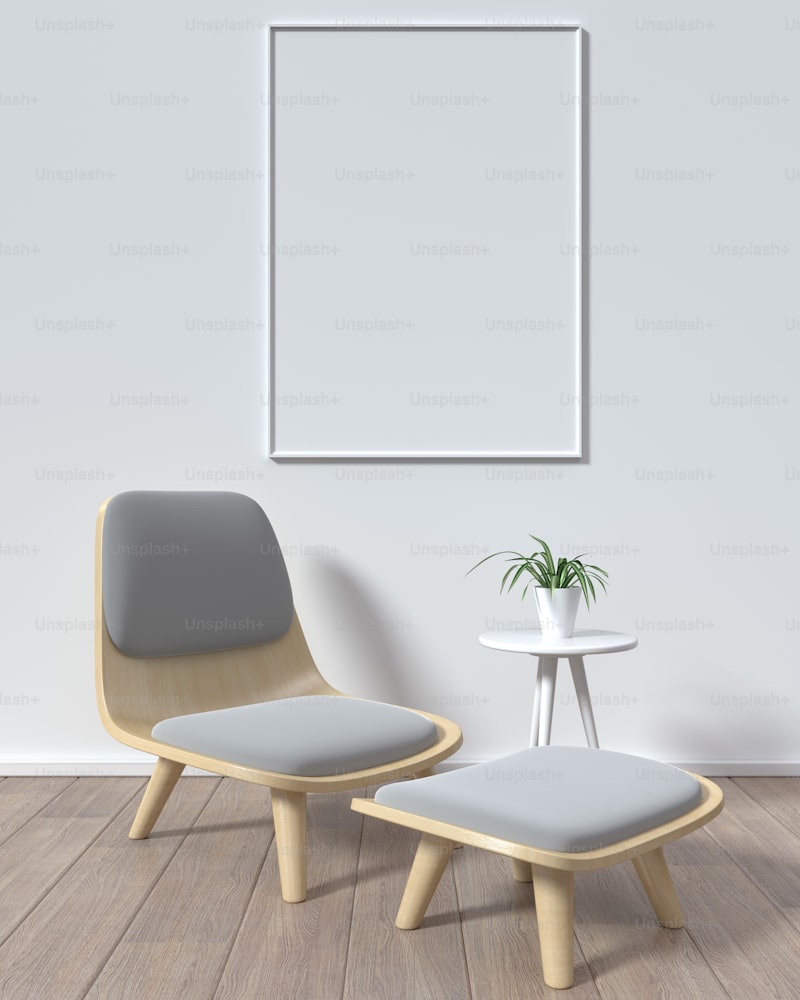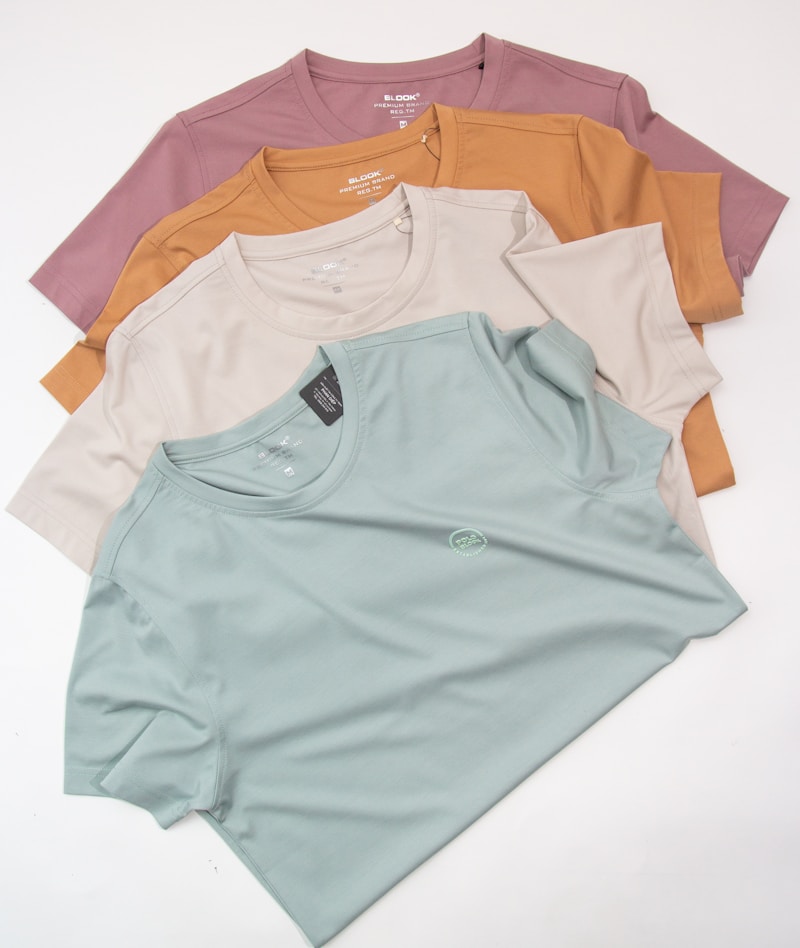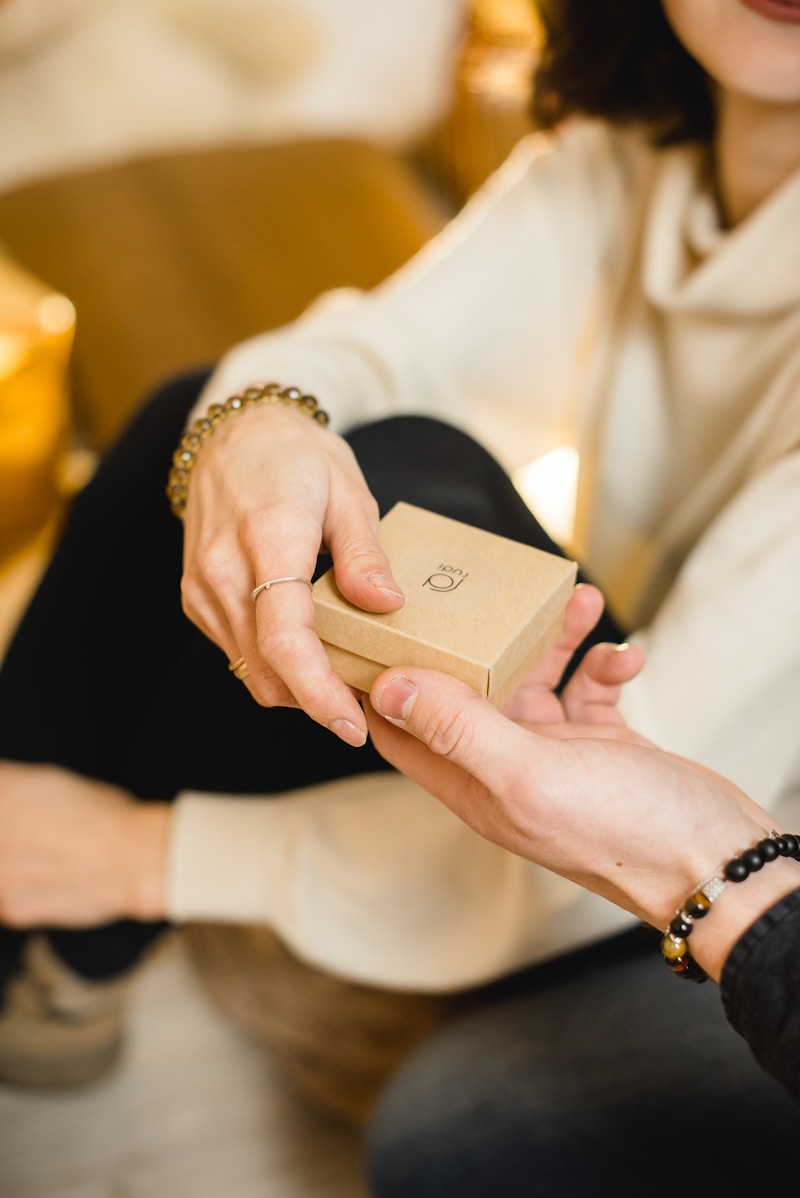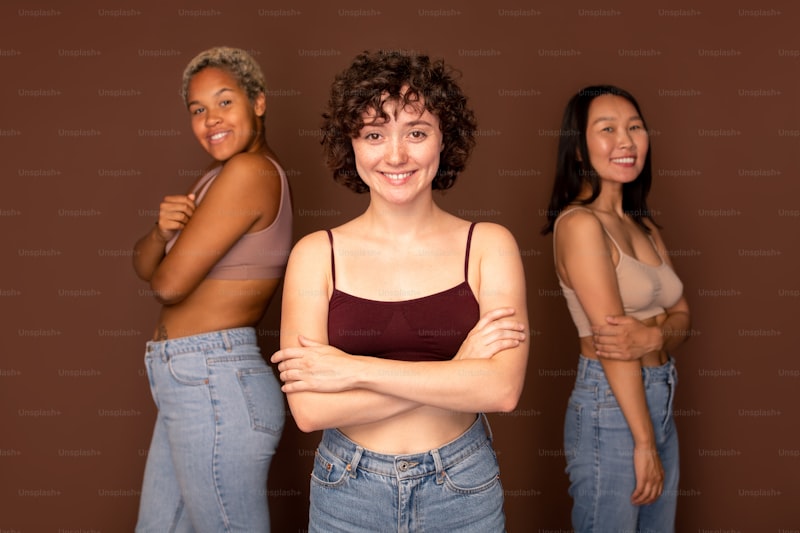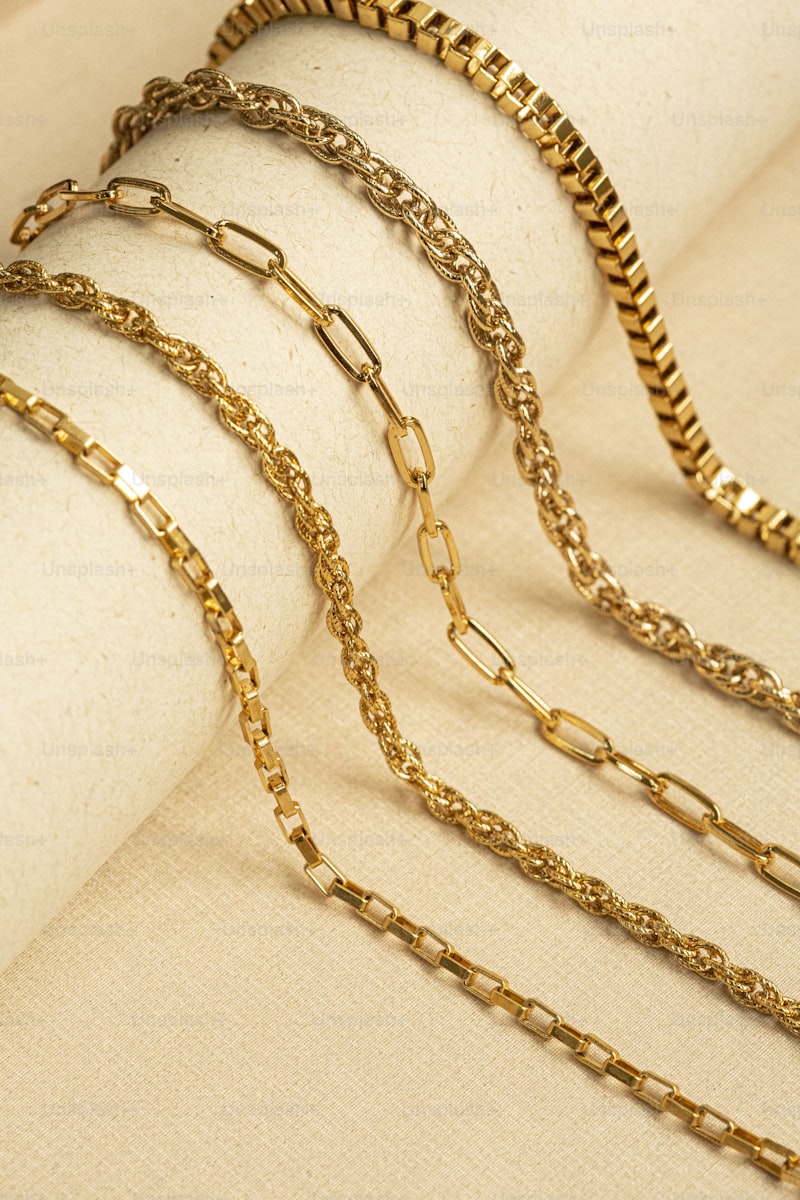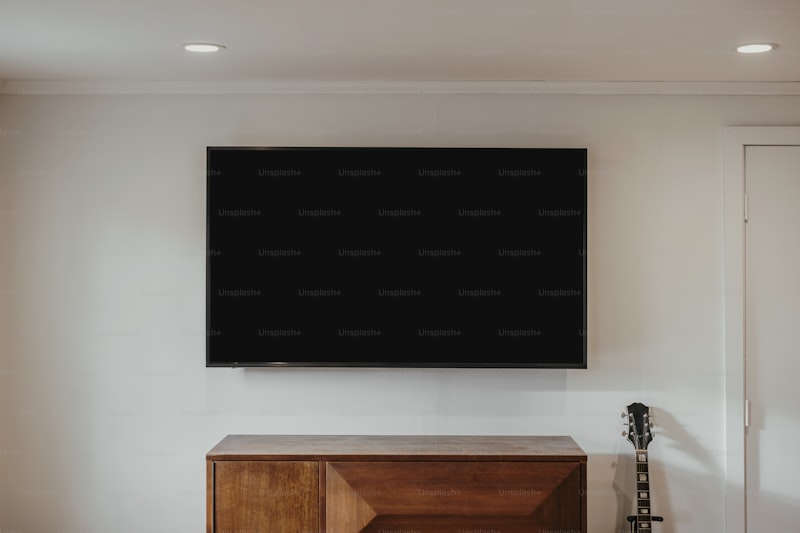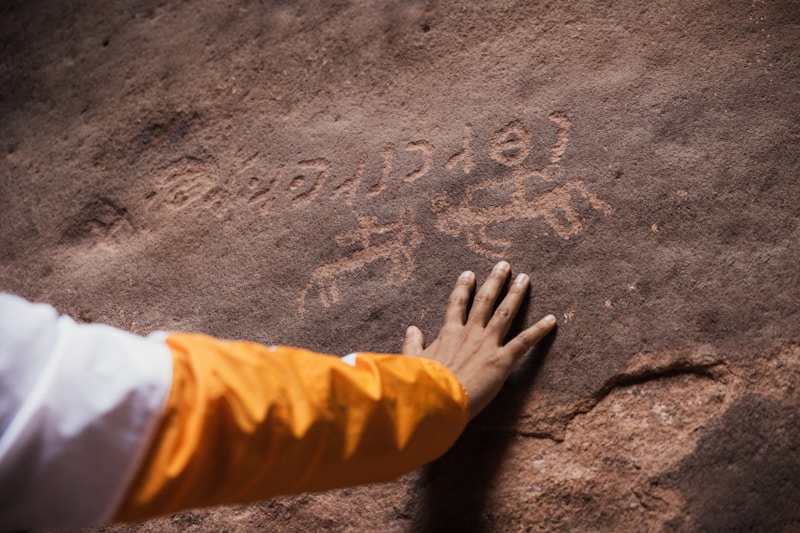Preserving Your Wedding Dress Alterations: A Guide to Timeless Elegance
Understanding the Importance of Preserving Your Wedding Dress AlterationsYour wedding dress is not just a garment; it is a significant symbol of love and commitment. After all the meticulous planning and alterations, preserving the beauty and integrity of your wedding dress is essential. This article will guide you on how to effectively preserve your wedding dress alterations, ensuring it remains a cherished keepsake for years to come.Why Preserving Your Wedding Dress is EssentialWedding dresses often carry emotional weight and memories that can last a lifetime. Preserving your dress involves not only maintaining its physical appearance but also protecting the alterations made to fit your unique style and body. The alterations transform a standard dress into your dream gown, making it crucial to keep those modifications intact.Common Concerns with Wedding Dress PreservationMany brides are unsure about the best practices when it comes to preserving their wedding dress alterations. Here are some common concerns: How to store the dress properly? What materials should I avoid when preserving? Can I clean the dress myself? How long can I store my dress?Steps to Preserve Your Wedding Dress AlterationsTo keep your wedding dress alterations in pristine condition, consider the following steps:1. Clean Your Dress ThoroughlyBefore preserving your dress, ensure it is cleaned properly. Many fabrics are delicate and require special care. It's best to take your dress to a profes...
Essential Seamstress Tips for Bridal Dress Alterations
When it comes to weddings, every detail matters, and the bridal dress is usually at the forefront of these details. A well-altered wedding dress can dramatically enhance the bride's appearance, making her feel more confident on her big day. This article provides essential seamstress tips for bridal dress alterations, ensuring that brides can achieve that perfect fit. Whether you are a seasoned professional or a DIY enthusiast, these tips will guide you through the process with ease.Understanding the Basics of Bridal Dress AlterationsBefore diving into specific tips, it's important to understand the basics of bridal dress alterations. Every bride has a unique body shape, and it's the seamstress's job to tailor the dress accordingly.Common Alterations NeededBridal dresses often require several key alterations. Here are some common modifications:Alteration TypeDescriptionHemmingAdjusting the length of the dress.Taking In/OutAdjusting the waist and bust areas for a better fit.Strap AdjustmentsModifying the straps for comfort and style.Adding BustleCreating a bustle for ease of movement during the reception.Each type of alteration needs careful consideration to maintain the integrity of the dress design.Essential Tips for Seamstress Success1. Schedule a Fitting Appointment EarlyTiming is crucial. Schedule your fitting appointments as early as possible, allowing plenty of time for multiple try-ons and alterations if needed. This way, you can ensure that your dress fits perfectly wi...
Dressing for Different Body Types: A Comprehensive Guide to Flattering Fashion
Understanding Body TypesWhen it comes to fashion, one size certainly does not fit all. Dressing for different body types involves understanding how each silhouette can enhance your appearance and boost your confidence. This guide will delve into the various body types—pear, apple, hourglass, rectangle, and inverted triangle—and provide practical tips on how to dress beautifully for each style.The Importance of Dressing for Your Body TypeChoosing the right outfit for your body type is essential for several reasons:Enhanced Confidence: Wearing clothes that flatter your figure can significantly boost your self-esteem.Balanced Proportions: Proper styling helps create a harmonious look by balancing your proportions.Highlighting Strengths: Knowing how to dress allows you to highlight your best features while minimizing less favored areas.Identifying Your Body TypeBefore diving into styling tips, it's important to identify your body type. A simple way to do this is by measuring your bust, waist, and hips. Here's a quick overview of the five main body types:Body TypeCharacteristicsPearWider hips and thighs, narrower shoulders and bustAppleBroader shoulders, fuller bust, undefined waistHourglassWell-defined waist with roughly equal bust and hip measurementsRectangleSlim with little definition between shoulders, waist, and hipsInverted TriangleBroad shoulders and long legs, narrower hipsDressing the Pear ShapePear-shaped individuals often have wider hips with a smaller bust. To dress t...
Ultimate Guide to Destination Wedding Outfit Ideas
Planning a destination wedding can be thrilling yet overwhelming, especially when it comes to choosing the perfect outfit. Whether you are the bride, groom, a wedding party member, or a guest, your attire must align with the wedding's theme, location, and climate. This article will delve into various Destination Wedding Outfit Ideas tailored for different roles and settings, providing inspiration and practical tips along the way.Understanding Destination WeddingsDestination weddings are ceremonies held in a location away from the couple's hometown. They often incorporate stunning backdrops, unique cultures, and breathtaking venues. However, choosing an outfit that is comfortable for travel yet elegant enough for a wedding can present challenges. Here are some key factors to consider: Location: Beach, mountains, or city? Season: Warm weather or chilly evenings? Theme: Rustic, formal, or bohemian?Destination Wedding Outfit Ideas for BridesBrides have a myriad of options when it comes to choosing their destination wedding attire. Consider the following outfit ideas that blend elegance with ease:1. Lightweight Wedding DressesOpt for wedding dresses made from lightweight fabrics like chiffon or silk. These materials are not only breathable but also flow beautifully in the wind. Think about styles such as:Dress StyleIdeal DestinationFabric RecommendationsA-lineBeachChiffon, SilkBohemianGardenLinen, CottonSheathRustic BarnTulle, Organza2. Bridal JumpsuitsA bridal jumpsuit is a ch...
Explore the Best Mother of the Bride Dress Styles for Every Wedding Theme
Understanding Mother of the Bride Dress StylesChoosing the perfect mother of the bride dress is a significant task that deserves careful consideration. The mother of the bride plays a crucial role in the wedding, and her attire should reflect the event's formality and style. In this article, we will explore various mother of the bride dress styles, offering insights into how to choose the right one while addressing common questions and considerations. By the end, you will have a comprehensive overview that will make the selection process easier.Key Considerations When Choosing a Mother of the Bride DressBefore diving into specific styles, let’s establish some essential considerations that can guide your choice: Wedding Theme: The dress should complement the overall theme of the wedding, whether it's formal, casual, or whimsical. Season: The time of year will influence fabric choices and styles. Lighter fabrics and colors are ideal for spring and summer weddings, while richer, darker tones suit fall and winter. Color Palette: Coordinate with the couple’s wedding colors to ensure harmony in the overall aesthetic. Body Type: Choose a style that flatters your figure and boosts confidence. Comfort: Since you’ll be in your dress for several hours, comfort is key.Popular Mother of the Bride Dress StylesHere are some of the most popular designs that have stood the test of time:StyleDescriptionOccasionsA-LineFlattering silhouette that is fitted at the bodice and flows out to the ...
Accessorizing Your Wedding Ensemble: The Perfect Touch for Your Special Day
The Importance of Accessorizing Your Wedding EnsembleYour wedding day is one of the most significant events in your life; it’s a day filled with joy, love, and celebration. As such, ensuring that every detail is perfect is crucial. One of the key elements that can elevate your wedding look is accessorizing. Accessorizing your wedding ensemble not only enhances your appearance but also allows you to express your personality and style. In this article, we will explore various aspects of wedding accessories, from jewelry and headpieces to shoes and handbags, guiding you on how to choose the perfect additions for your big day.Choosing the Right JewelryJewelry plays a vital role in completing your wedding ensemble. The right pieces can add sparkle and elegance to your overall look. Here are some tips for selecting wedding jewelry:Type of JewelryConsiderationsNecklaceChoose a piece that complements the neckline of your dress.EarringsConsider the length and style; chandelier earrings can add drama, while studs provide a classic look.BraceletA delicate bracelet can enhance your wrists, but avoid overdoing it. Less is often more.RingsYour engagement ring will likely be the star; keep the focus on it by choosing simpler wedding bands.When selecting jewelry, consider the overall theme of your wedding and your dress style. If you're wearing a bohemian-inspired gown, opt for colorful and natural-looking stones. For a classic look, choose traditional pearls or diamonds.Headpieces: Adding a...
Discover the Elegance of Heirloom Wedding Gowns: Timeless Treasures for Your Special Day
A Deep Dive into Heirloom Wedding GownsEvery bride dreams of a wedding dress that encapsulates love, tradition, and elegance. Heirloom wedding gowns offer a unique opportunity to blend history with personal flair, creating an unforgettable experience on the most important day of your life. This article will explore the significance of heirloom wedding gowns, their history, and how to choose the perfect dress for your wedding day.What is an Heirloom Wedding Gown?An heirloom wedding gown is typically a wedding dress that has been passed down through generations. These dresses often hold sentimental value and may be embroidered with intricate designs, adorned with lace, or crafted from luxurious fabrics. Some families may even have a designated dress that serves as a "something old" or "something borrowed," ensuring that the legacy continues. Choosing to wear an heirloom gown connects the bride with her ancestors, providing a sense of continuity and family heritage on a special day.History of Heirloom Wedding GownsThe tradition of heirloom wedding dresses can be traced back to the Victorian era when brides began to favor white wedding gowns over the colorful dresses that were commonly worn before. The significance of white was deeply rooted in purity and new beginnings. Many brides would choose to wear a dress made by their mother or grandmother, signifying the familial bond and shared experiences. Over the years, these dresses have evolved in style and design, reflecting change...
Embracing Modern Minimalism: A Guide to Simplifying Your Life and Space
Understanding Modern MinimalismIn today's fast-paced world, where clutter and distractions are ubiquitous, the concept of Modern Minimalism has emerged as a beacon of simplicity and tranquility. This design philosophy extends beyond mere aesthetics; it encapsulates a lifestyle choice that prioritizes functionality, sustainability, and mental clarity.The Essence of Modern MinimalismAt its core, Modern Minimalism champions the idea of "less is more." It's about stripping away the unnecessary to focus on what truly matters. This approach can be applied across various aspects of life, including home decor, fashion, and even daily routines. Here are some foundational principles: Functionality: Every item serves a purpose. Simplicity: Designs are clean and straightforward. Quality over Quantity: Invest in fewer, but higher-quality items.How to Incorporate Modern Minimalism into Your SpaceThe beauty of Modern Minimalism lies in its adaptability. Whether you live in a small apartment in New York City or a spacious home in the suburbs of London, you can embrace this lifestyle.1. Declutter Your SpaceBegin by removing items that no longer serve a purpose or bring you joy. This process can be intimidating, but it’s essential. Consider using the "one in, one out" rule; for every new item you bring into your home, let go of an existing one.2. Choose a Neutral Color PaletteOpt for neutral tones such as whites, grays, and beiges. These colors create a calm atmosphere and allow the s...
Unveiling the Fascination of Layered Textures: A Guide to Understanding and Applying This Artistic Technique
In the realm of design and art, the concept of Layered Textures has gained significant traction, captivating artists, designers, and enthusiasts alike. This article delves deep into what layered textures are, their application in various art forms, and how they can enhance the visual appeal of your projects. From understanding the basic principles to exploring advanced techniques, we aim to provide a comprehensive guide that inspires creativity and innovation.What Are Layered Textures?Layered textures refer to the technique of stacking different materials, colors, and patterns to create a rich, engaging visual experience. This method can be seen across many artistic disciplines, including painting, digital art, photography, and even interior design. The beauty of layered textures lies in their ability to add depth, dimension, and complexity to a piece without overwhelming the viewer.The Importance of Layered Textures in ArtLayered textures can transform a simplistic composition into a dynamic and compelling one. Here are a few reasons why they are essential in art:Depth and Dimension: Layering different textures adds physical and visual depth to a piece, inviting viewers to look closer.Visual Interest: Combining various textures enhances the overall aesthetic, making the artwork more engaging.Enhanced Emotional Impact: The contrast between different layers can evoke different feelings, enriching the viewer's emotional response.Applications of Layered TexturesLayered textures ...
Unlocking the Magic of Seasonal Styles: A Comprehensive Guide
As the seasons change, so do our fashion choices. Embracing seasonal styles not only keeps our wardrobe fresh but also reflects our personal style while adapting to the shifting weather conditions. This article explores the essence of seasonal styles, their impact on fashion trends, and practical tips for maximizing your wardrobe all year round.Understanding Seasonal StylesSeasonal styles refer to fashion trends that are tailored to specific times of the year, capturing the essence of summer's lightness, autumn's warmth, winter's coziness, and spring's vibrant colors. Each season brings unique fabrics, colors, and designs that enhance the way we dress and express ourselves.The Four Seasons of FashionIn the world of fashion, each of the four seasons offers distinct characteristics that influence clothing choices. Let's delve into each season’s styles:SeasonKey FeaturesPopular FabricsColor PaletteSpringFresh, vibrant, and lightCotton, linen, chiffonPastels, bright huesSummerCool, breathable, and funLightweight cotton, swimwear fabricsBold colors, tropical printsAutumnLayered, rich textures, and warmer tonesWool, flannel, denimEarth tones, warm hues like orange and brownWinterCozy, warm, and layeredCashmere, heavy knits, leatherDeep colors, jewel tonesThe Impact of Seasonal Styles on Fashion TrendsSeasonal styles not only determine what we wear but also significantly influence global fashion trends. Designers often present their collections inspired by seasonal changes, showcasi...
Unlocking the Power of Personalized Touches in Your Life
The Importance of Personalized TouchesIn an increasingly automated world, the value of personalized touches has never been more significant. Whether in our personal or professional lives, adding a unique and individual touch can foster deeper connections, enhance experiences, and create lasting memories. In this article, we will explore the concept of personalized touches, examine where and how they can be effectively utilized, and highlight their benefits.What Are Personalized Touches?Personalized touches refer to the thoughtful adjustments or additions made to an experience or product, tailored to meet individual preferences, interests, or characteristics. This approach might be seen in various contexts, from gifts that reflect a recipient's unique traits to customized services in businesses that enhance customer satisfaction.Examples of Personalized Touches in Everyday LifePersonalized touches can be encountered in numerous aspects of daily life. Consider the following examples:ContextExamplesGiftsEngraved jewelry, custom portraits, or personalized booksEventsTailored party favors, personalized invitations, and custom decorationsCustomer ServicePersonalized emails, loyalty programs, and customized recommendationsHome DecorCustom wall art, personalized cushions, and unique furnitureFood & BeverageCustom menus, personalized drink labels, and tailored meal plansThe Benefits of Adding Personalized TouchesIncorporating personalized touches can result in various benefits, both f...
Understanding Diverse Body Types: Celebrating Uniqueness in All Shapes and Sizes
Introduction to Diverse Body TypesIn a world that often promotes a singular standard of beauty, understanding and celebrating diverse body types is essential for fostering inclusivity and self-acceptance. From curvy to athletic, petite to tall, every body type tells a unique story. This article will delve into the various body types, the societal perceptions surrounding them, and how everyone can learn to love their own body.The Spectrum of Body TypesBody types can generally be categorized into several key classifications. These categories reflect the natural variations among individuals and can include:Body TypeDescriptionEctomorphCharacterized by a slim, lean figure with narrow shoulders and hips. Ectomorphs typically have a fast metabolism which makes it easier to stay slim but harder to gain weight.MesomorphThese individuals tend to have a more muscular build with broader shoulders and a narrower waist. They find it easier to gain or lose weight compared to other body types.EndomorphEndomorphs usually have a rounder physique, with wider hips and a larger bone structure. They may find it challenging to lose weight but can gain muscle easily.Apple ShapeCharacterized by carrying weight around the midsection. Individuals with this body type often have broader shoulders and a larger bust.Pear ShapePear-shaped individuals typically have a smaller upper body with wider hips and thighs. They often carry weight in the lower half of the body.Hourglass ShapeThis classic figure is kn...
Accessorizing with Style: Elevate Your Fashion Game
Introduction to AccessorizingAccessorizing is more than just adding a few items to an outfit; it is about creating a cohesive look that reflects your personality and enhances your overall style. In today's fast-paced world, understanding how to accessorize can set you apart from the crowd. This guide will delve into the art of accessorizing with style, offering insights on how to choose the right pieces, where to shop, and tips for creating that perfect look.The Importance of AccessoriesAccessories play a crucial role in fashion, serving various purposes such as enhancing your outfit, showcasing personal style, and allowing for versatility. The right accessory can transform a simple outfit into a stunning ensemble. Here are a few reasons why accessorizing is essential:Express Yourself: Accessories are a reflection of personal style, allowing you to express your unique personality.Add Dimension: They bring dimension to your outfit, adding layers and textures that can elevate your overall appearance.Complete the Look: No outfit is truly complete without the right accessories, whether it's jewelry, bags, or shoes.Different Types of AccessoriesUnderstanding the different categories of accessories is the first step toward styling them effectively. Below are the primary types of accessories you can use:Type of AccessoryDescriptionJewelryIncludes necklaces, bracelets, earrings, and rings that add a touch of elegance and sparkle.BagsFrom handbags to clutches, bags often act as both f...
Mood Board Inspirations: The Ultimate Guide to Unleashing Your Creativity
Introduction to Mood Board InspirationsIn today's fast-paced world, visual communication and creativity play a crucial role in various fields, including design, marketing, and even personal projects. One effective way to harness these elements is by using mood boards. This article explores Mood Board Inspirations, their importance, and how to create an inspiring mood board that captures your vision. What is a Mood Board?A mood board is a visual collage that communicates ideas, themes, and concepts. It often includes images, color palettes, textures, and typography to create a cohesive representation of a desired style or emotional aesthetic. By looking at a mood board, anyone can grasp the intended feeling or concept behind a project quickly.The Importance of Mood BoardsMood boards are essential for various reasons:Visual Communication: They help convey abstract ideas in a tangible form.Project Direction: They serve as a roadmap for design projects, ensuring consistency.Inspiration: Mood boards can ignite creativity and spur new ideas.Client Collaboration: They facilitate better understanding between creatives and clients.Mood Board Inspirations for Different FieldsMood boards can be tailored to fit various industries and projects. Below are some inspirations across different fields:1. Interior DesignIn interior design, mood boards help visualize the intended atmosphere of a space. You might consider using a combination of color swatches, furniture pieces, textures, and image...
Elevate Your Vehicle's Appearance with Elegant Detailing
When it comes to maintaining the beauty and longevity of your vehicle, Elegant Detailing is not just a luxury; it's a necessity. This comprehensive guide will explore the art and science behind Elegant Detailing, highlighting its importance, techniques, and benefits. What is Elegant Detailing? Elegant Detailing refers to a meticulous approach to cleaning, polishing, and protecting a vehicle's exterior and interior surfaces. Unlike a standard car wash, this process involves a deep clean that goes far beyond the surface, aiming to restore your vehicle to its original glory. Why Choose Elegant Detailing? There are numerous reasons why vehicle owners opt for Elegant Detailing. Here are a few key points: Preservation: Protects paint and materials from damage. Aesthetic Appeal: Enhances the vehicle's look, making it more attractive. Resale Value: Maintains or increases the resale value of your vehicle. The Process of Elegant Detailing The process of Elegant Detailing can be broken down into several steps. Here's a detailed overview: Step Description 1. Inspection The detailing process begins with a thorough inspection of the vehicle to identify areas requiring special attention. 2. Washing A comprehensive wash is performed using high-quality products that won’t damage the vehicle’s paint or surfaces. 3. Claying Claying removes embedded contaminants from the paint, ensuring a smooth surface. 4. Polishing The polishing phase addresses impe...
Showcasing Individuality: The Key to Standing Out in a Crowded World
Understanding the Importance of Showcasing IndividualityIn a world where conformity often seems to be the norm, showcasing individuality has become a vital asset for personal and professional success. Whether you are an artist, a business owner, or just an everyday individual, the ability to express your unique traits and talents can set you apart from the crowd. This article will explore various strategies for showcasing individuality effectively, from branding in business to self-expression in social settings.The Power of Individuality in Personal BrandingIn today's fast-paced digital landscape, personal branding has gained immense importance. Individuals are now seen as brands themselves, and showcasing individuality is crucial in creating a memorable personal brand. Here are a few ways to express your individuality in personal branding: Define Your Unique Selling Proposition (USP): Identify what makes you unique. This could be your specific skill set, your life experiences, or your viewpoints. Create a Consistent Online Presence: Utilize social media platforms to showcase your individuality. Your posts should reflect your voice, values, and aesthetic. Engage with Your Audience: Building genuine connections can help showcase your personality and create a community around your brand.Individuality in Professional SettingsShowcasing individuality doesn’t only apply to personal branding; it is also essential in professional environments. Emphasizing your unique traits can l...
Incorporating Heritage: A Guide to Embracing Cultural Identity
Understanding the Power of Incorporating HeritageCultural heritage serves as a critical component of our identities as individuals and communities. It provides a sense of belonging and continuity, anchoring us in history and linking us to our ancestors. In today's increasingly globalized world, incorporating heritage into various aspects of life—be it personal, social, or professional—has gained paramount importance. This article delves into the significance of incorporating heritage, its benefits, and practical ways to achieve this in our daily lives.What Does “Incorporating Heritage” Mean?Incorporating heritage refers to the practice of integrating elements of one's cultural background, traditions, and values into everyday life or institutional practices. This can manifest in numerous ways, such as through art, architecture, cuisine, fashion, and social practices. By embracing heritage, individuals and organizations foster a richer cultural environment that honors the past while paving the way for future generations.The Importance of Incorporating HeritageIncorporating heritage is significant for several reasons: Preservation: It helps preserve languages, traditions, and artifacts that are at risk of being forgotten. Identity: It bolsters one’s sense of identity, allowing individuals to connect with their roots. Social Cohesion: Heritage fosters community ties and creates a sense of belonging. Education: It serves as a teaching tool for future generations about ...
The Visual Impact of Styles: Understanding Their Importance in Design
Introduction to Visual ImpactIn today's fast-paced world, where first impressions are often made in mere seconds, the visual impact of styles has become more critical than ever. Whether you are focusing on fashion design, graphic design, interior decor, or digital marketing, understanding how styles influence perception can significantly affect the success of your projects or campaigns. This article delves into the elements that contribute to visual impact and how different styles evoke distinct emotional responses from viewers.What is Visual Impact?Visual impact refers to the immediate impression that a visual element (such as color, typography, layout, and overall design) creates upon the viewer. It is a powerful tool that can enhance communication, provoke emotions, and influence decisions. For instance, a vibrant color palette can evoke excitement, while muted tones may instill calmness. The key to effective design lies in harnessing the right styles to convey the intended message.The Role of Color in Visual StylesColor is one of the most influential elements when discussing the visual impact of styles. Different colors can evoke different emotions; understanding color psychology can help designers choose the right palette for their projects. Below is a table summarizing the emotional responses typically associated with various colors:ColorEmotionRedPassion, energy, urgencyBlueTrust, calm, professionalismGreenNature, tranquility, growthYellowHappiness, warmth, optimismPur...
Essential Guide to Humidity Control for Preserving Garments
Understanding Humidity Control for Preserving GarmentsWhen it comes to preserving garments, particularly those that hold sentimental or monetary value, humidity control is an essential factor that cannot be overlooked. Humidity, the amount of water vapor present in the air, significantly influences the condition of textiles, affecting their longevity and preserving their aesthetics. In this comprehensive guide, we’ll explore effective humidity control methods, the importance of monitoring humidity levels, and practical tips for safeguarding your garments from moisture-related damage.The Importance of Humidity ControlExcessive humidity can lead to various issues in garment preservation, including:Mold and Mildew Growth: High humidity creates a perfect breeding ground for mold and mildew, which thrive in damp conditions.Fabric Degradation: Prolonged exposure to moist air can weaken fibers, leading to tears and deterioration.Unpleasant Odors: Humidity can create musty smells in fabrics, detracting from their appeal.Pest Infestation: Certain pests are attracted to humid environments, risking further damage to your clothing.Understanding the Ideal Humidity LevelsMaintaining the right humidity levels is crucial in garment storage. Ideally, the relative humidity should be kept between 30% and 50%. At this level:Your garments will remain dry and protected from mold and mildew.Fabrics will retain their shape and integrity, ensuring they stand the test of time.Odors will be minimized, ...
Essential Cleaning Recommendations Before Storage: Maximize Longevity and Maintain Quality
When it comes to storing your belongings, ensuring that they are appropriately cleaned before storage can drastically enhance their longevity and maintain their quality. This article will provide you with essential cleaning recommendations before storage, offering tips for items commonly stored, understanding the appropriate cleaning methods, and emphasizing the importance of preventive measures. Read on to help safeguard your possessions and ensure they come out of storage just as good as new.Understanding the Importance of Cleaning Before StorageBefore delving into specific recommendations, it’s crucial to understand why cleaning your items before storage is essential. There are several key reasons: Prevent Damage: Dirt, dust, and residues can lead to deterioration over time. Certain materials, especially fabrics and wood, can suffer significant damage if dirt is left on them. Discourage Pests: Food residues or organic material can attract pests like moths or rodents, jeopardizing your belongings. Maintain Aesthetic Value: Properly cleaned items will look and feel better when you retrieve them. Whether it’s electronics, furniture, or clothing, cleanliness matters. Efficiency: Cleaning before storage can save you time and hassle in the long run, as you won’t have to deal with cleaning out mold, mildew, or other forms of damage later.Cleaning Recommendations by Item TypeDifferent items require specific cleaning techniques and considerations. Below are recommendati...
